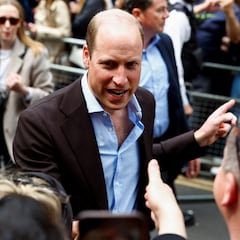What is the Commonwealth? How many countries are there, and why was Elizabeth II Queen of Australia and Canada?
As King, Charles will serve as Head of the Commonwealth, the global network of 54 nations with close ties to the United Kingdom.


The UK monarch not only rules over the United Kingdom of England, Wales, Scotland, and Northern Ireland, but is also head of state in dozens of nations across the world.
- King Charles III Coronation: Follow live online updates and commentary here!
There are fifty-four countries across the world, including the United Kingdom, who form voluntary members of the Commonwealth, formerly known as the British Commonwealth of Nations. This free association is now led by King Charles III, but members are tied more by shared values and ties of friendship than by any governmental structure.
Read more from AS USA:
- What is the difference between the UK, GB and England?
- Will William be crowned Prince of Wales by Charles III at his coronation?
- The crown jewels of the UK
The evolution of the Commonwealth
The Commonwealth emerged in the first half of the 20th century as Great Britain began to release the composite regions of its Empire. For the first time, sovereign states were able to pledge allegiance to the British crown while maintaining their own government.
The Commonwealth was first established in 1931 with the Statute of Westminster, and sovereign status was given to Australia, Canada, the Irish Free State (Ireland), New Zealand, South Africa, and Newfoundland, which later became a province of Canada.
Queen Elizabeth II has been the mainstay of Britain’s national identity for more than seven decades.
— The Associated Press (@AP) September 9, 2022
Take a look back at the life of the monarch, from her early days of service and public duty to her later influence as head of the Commonwealth. https://t.co/1wNzNpxh0b pic.twitter.com/5BIRSqF9yz
Over the following eighty years, the Commonwealth expanded, with many of its members being former colonies of the Empire, whose political and economic elites opted to retain close ties with Britain after their independence. One of the first to do so was India, which decided to remain in the Commonwealth after its status as a republic was confirmed.
The Head of the Commonwealth is not necessarily a hereditary role, despite the fact that it has always been assumed by the British monarch. However, after the death of Queen Elizabeth II this week, it was confirmed that King Charles III would become Head of the Commonwealth.
Why are Canada and Australia in the Commonwealth?
As a general rule, Commonwealth nations opt to be in the group because of close political and historical ties with the United Kingdom. Both Australia and large parts of Canada were formerly under the control of the British Empire, and there remain similarities in culture, society, and language that bind the nations.
In terms of the specifics, Canada wanted closer ties with the UK in the post-war years to aid its lucrative export market. As a number of the first Commonwealth nations were recently-founded republics, like Canada, membership in the Commonwealth was seen as a unifying principle that could bring together nations of different political systems.
Related stories
The situation is similar in Australia, which was a British colony until 1901. Australia was one of the founding nations of the Commonwealth, despite being on the other side of the world, and retains a close relationship with the UK.
A statement from the Australian Parliament explains: “As Australia’s history is closely tied to Britain, we have chosen to maintain our membership of the Commonwealth to the present day.”

